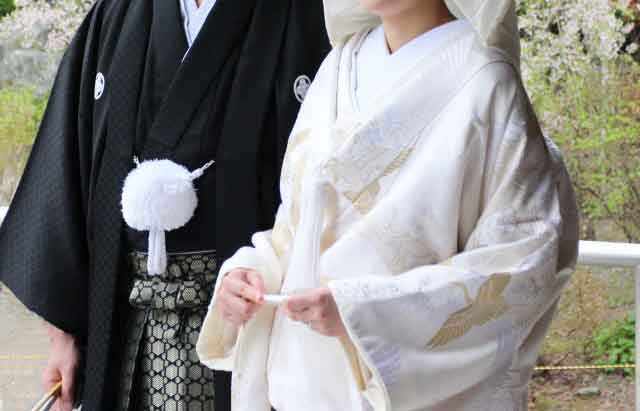
What is a Haori?
A Haori is a type of short kimono, an outer garment worn over a kosode.
Many celebrities are seen wearing it during New Year's specials.
Many celebrities are seen wearing it during New Year's specials.
The haori's history
The history of the haori dates back to the Warring States period. Leading military commanders used haori decorated with their family crests or favorite patterns as protection against the cold winter months.
In the Edo period (1603-1867), the haori Hakama, worn first with the hakama, became a stylized garment. It became the daily wear for warriors and the formal attire for townspeople.
By the mid-Edo period, the haori hakama with a black crest (montsuki haori hakama) became the most formal attire. At the same time, the haori also came to be used as a sign of a person's status and family background. The wearer's family or clan crest was placed on the haori. Furthermore, the haori was also ranked in the order of plain, komon, and striped patterns.
However, only a limited number of people were allowed to wear haori, such as village officials for peasants, and banto and above for merchants.
By the end of the Edo period, haori hakama became the formal attire of warriors and became popular as a formal dress for men. Today, it is usual to see celebrities appearing on television wearing haori during New Year's and other festive occasions.
About Men and Haori

The haori was originally a men's garment, as can be seen from its origins in the Warring States period, when it was first used by warlords. Let's take a look at the relationship between the haori and men and how it is used.
Haori of the Shinto priesthood
The Shinto priests, or the Shinto priests of shrines, also use a haori. The haori is a black montsuki haori. It is an indispensable tool for the priests when they travel, especially for outside festivals, and is one of the tools of their trade.
The crest of the god or the family crest is often used, such as Mumon, Hitotsumon, Mitsumon, and Gotsumon.
A white robe is often worn under the haori, and the haori cord is often white. In most cases, priests also wear hakama called sashiko, which are purple, white, or light blue.
Jutoku Haori
Jutokubaori is read as "a kimono with a wide sleeve". Another name is hosode. This refers to a haori worn over a long kimono that is about as long as the ankles. It is similar in shape to a regular haori, but is made of silk gauze, has strings sewn into the fabric, and is uniquely tailored with long, thin folds called folds at the waist. This haori was widely popular among merchants in the Edo period (1603-1867). It was the formal dress of doctors, painters, haiku poets, Buddhist monks, etc. Even today, this haori is often used in tea ceremonies and other ceremonies.
About the haori for women

In ancient times, the haori was considered to be worn by men. However, as time went by, women began to use it as well. Around the middle of the Edo period, haori was worn by Tatsumi geisha, who were active in Fukagawa'Edo ( now is Koto Ward) .
From the Taisho era (1912-1926) through the prewar period, women began to have more opportunities to participate in society than before. Women then wore men's formal wear to social gatherings such as kabuki, tea ceremonies, reunions, and social gatherings. In other words, the haori came to be used by women as going out clothes.
Also, the length of women's haori has been in fashion. In the Meiji to Taisho periods, long haori reached below the knees, and in the Showa 30s, short haori that covered the obi were in vogue. In the 2000s, long haori became popular.
Just as the fashionable length of skirts and socks changes with the times, the preferred length of haori also differs with the times.
Black Montsuki Haori
This haori was originally used for men. However, it became popular among married women from the Meiji period to the 1950s.
For men's formal wear, there are only black and colored crested haori, but for women's formal wear, in addition to black and colored crested haori, there are three types: black crested haori, colored crested haori, and ehahaori, a haori with a pattern that covers the entire width of the haori. There is also a single crest with only one crest dyed on the back, and three crests with crests on both rear sleeves, offering a wide range of variations. The women's haori is treated as formal wear only for this crested haori. Since there were no specific regulations for the lower part of the kimono, the haori was very useful.
Until the Showa1950s, it was the standard attire for mothers accompanying their children to entrance and graduation ceremonies, but with the passage of time, the haori was worn less and less, and today, it is rarely seen.
Haori with furisode
Furisode haori had a period from the Taisho period (1912-1926) to the early Showa period (1926-1989) when it was fashionable for unmarried women to wear as a fashionable garment.
At that time, furisode haori was also worn over furisode. Today, however, furisode haori is not often worn over furisode, and in most cases it is a coat that is worn over furisode.
Summary
The haori has been loved by us Japanese since the Warring States period. However, as time went by and western clothes came in and culture changed, the haori moved away from our lives, and today it is not seen very often.
However, haori is fashionable and can be used with kimono to make it more prestigious, and it can also be used as a warm clothing.
If you are at all interested, it may be a good experience to try renting one and wearing it once on a trip or during New Year's.
